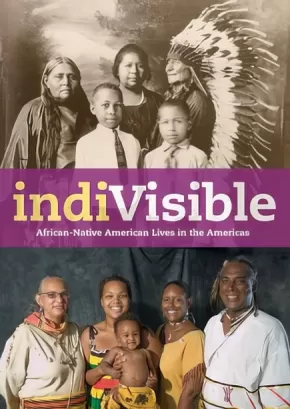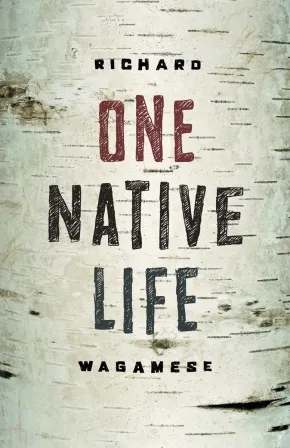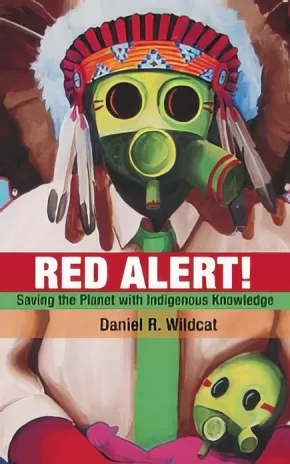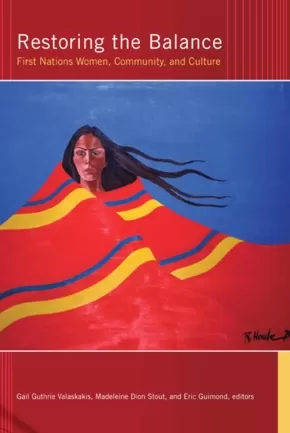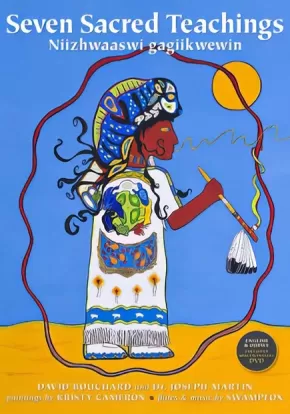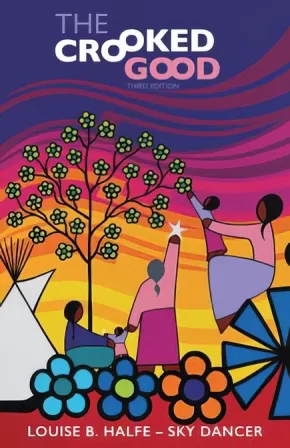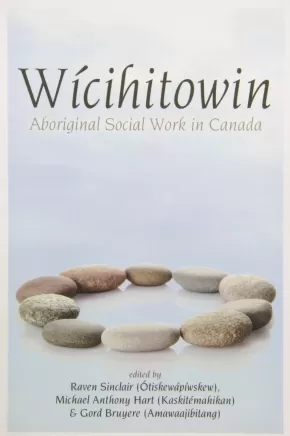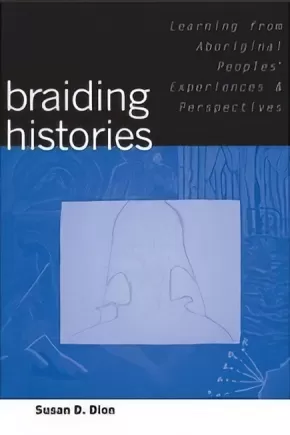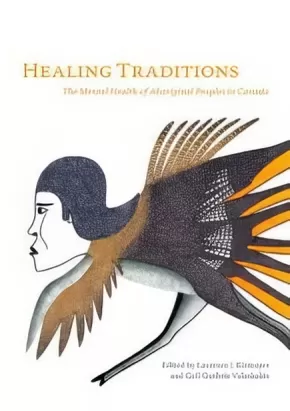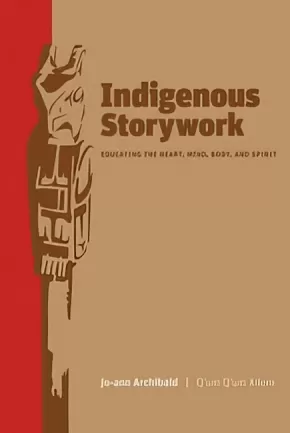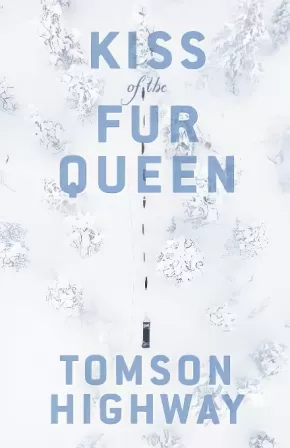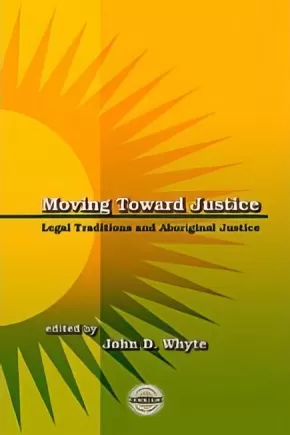
Indigenous Studies
976
-
990
of
1030 Results;
Sort By
Go To
of 69
IndiVisible: African-Native American Lives in the Americas
$25.99
Editors:
Format:
Paperback
Text Content Territories:
Indigenous American;
ISBN / Barcode: 9781588342713
Synopsis:
Synopsis:
Throughout American history, people of combined African and Native American descent have often struggled for acceptance, not only from dominant cultures but also from their own communities. In this collection of twenty-seven groundbreaking essays, authors from across the Americas explore the complex personal histories and contemporary lives of people wth a dual heritage that has rarely received attention as part of the multicultural landscape.
Illustrated with seventy-five paintings, photographs, and drawings, the book brings to light an epic but little-known part of American history that speaks to present-day struggles for racial identity and understanding.
Additional Information
256 pages | 7.00" x 9.75"
One Native Life
$19.95
Format:
Paperback
Text Content Territories:
Indigenous Canadian; First Nations; Anishinaabeg; Ojibway; Wabaseemoong First Nation;
ISBN / Barcode: 9781553653127
Synopsis:
Synopsis:
In One Native Life, Wagamese looks back down the road he has travelled in reclaiming his identity and talks about the things he has learned as a human being, a man and an Ojibway in his fifty-two years. Whether he's writing about playing baseball, running away with the circus, attending a sacred bundle ceremony or meeting Pierre Trudeau, he tells these stories in a healing spirit. Through them, he celebrates the learning journey his life has been.
Free of rhetoric and anger despite the horrors he has faced, Wagamese’s prose resonates with a peace that has come from acceptance. Acceptance is an Aboriginal principle, and he has come to see that we are all neighbours here. One Native Life is his tribute to the people, the places and the events that have allowed him to stand in the sunshine and celebrate being alive.
Reviews
"One Native Life contains sixty-five stories that are divided into four books: Ahki (Earth), Ishskwaday (Fire),Nibi (Water), andIshpiming (Universe). From this diverse selection emerge accounts not only of disappointment and racial discrimination but also of the transformative power of love and caring." - Sean Carleton, The British Columbia Quarterly
Educator Information
Suggested Grades: 9-12
ABPBC
Grades 10-12 BC English First Peoples Resource for units on First Peoples' Story and Place-Conscious Learning.
Additional Information
272 pages | 5.63" x 8.75"
Red Alert
$21.95
Format:
Paperback
Text Content Territories:
Indigenous;
ISBN / Barcode: 9781555916374
Synopsis:
Synopsis:
"What the world needs today is a good dose of Indigenous realism," says Native American scholar Daniel Wildcat in this thoughtful, forward-looking treatise. The Native response to the environmental crisis facing our planet, Red Alert! seeks to debunk the modern myths that humankind is the center of creation and that it exerts control over the natural world.
Taking a hard look at the biggest problem that we face today-the damaging way we live on this earth-Wildcat draws upon ancient Native American wisdom and nature-centered beliefs to advocate a modern strategy to combat global warming. Inspiring and insightful, Red Alert! is a stirring call to action.
Additional Information
128 pages | 5.10" x 8.10"
Restoring the Balance: First Nations Women, Community, and Culture
$27.95
Format:
Paperback
Text Content Territories:
Indigenous Canadian; First Nations;
ISBN / Barcode: 9780887557095
Synopsis:
Synopsis:
First Nations peoples believe the eagle flies with a female wing and a male wing, showing the importance of balance between the feminine and the masculine in all aspects of individual and community experiences. Centuries of colonization, however, have devalued the traditional roles of First Nations women, causing a great gender imbalance that limits the abilities of men, women, and their communities in achieving self-actualization.
Restoring the Balance brings to light the work First Nations women have performed, and continue to perform, in cultural continuity and community development. It illustrates the challenges and successes they have had in the areas of law, politics, education, community healing, language, and art, while suggesting significant options for sustained improvement of individual, family, and community well-being.
Written by fifteen Aboriginal scholars, activists, and community leaders, Restoring the Balance combines life histories and biographical accounts with historical and critical analyses grounded in traditional thought and approaches. It is a powerful and important book.
Additional Information
384 pages | 6.00" x 9.00" | Paperback
Seven Sacred Teachings: Niizhwaaswi gagiikwewin
$24.95
Artists:
Format:
Hardcover
Text Content Territories:
Indigenous Canadian;
Reading Level: N/A
ISBN / Barcode: 9780978432720
Synopsis:
Synopsis:
Seven Sacred Teachings is a message of traditional values and hope for the future. The Teachings are universal to most First Nation peoples. These Teachings are seen in school communities from coast to coast across North America. They are a link that ties all Native, Inuit and Métis communities together.
The seven teachings include: respect, humility, love, truth, honesty, wisdom and courage. The stories in the book provide an example of how each teaching came to be.
Educator Information
Seven Sacred Teachings has been produced in several languages. This edition is in English and Ojibwe.
This resource is also available in French: Les Sept enseignements sacrés
Taking Back Our Spirits: Indigenous Literature, Public Policy, and Healing
$27.95
Format:
Paperback
Text Content Territories:
Indigenous Canadian;
ISBN / Barcode: 9780887557101
Synopsis:
Synopsis:
From the earliest settler policies to deal with the “Indian problem,” to contemporary government-run programs ostensibly designed to help Indigenous people, public policy has played a major role in creating the historical trauma that so greatly impacts the lives of Canada’s Aboriginal peoples. Taking Back Our Spirits traces the link between Canadian public policies, the injuries they have inflicted on Indigenous people, and Indigenous literature’s ability to heal individuals and communities. Episkenew examines contemporary autobiography, fiction, and drama to reveal how these texts respond to and critique public policy, and how literature functions as “medicine” to help cure the colonial contagion.
The Crooked Good
$16.50
Format:
Paperback
Text Content Territories:
Indigenous Canadian; First Nations; Cree (Nehiyawak);
Reading Level: N/A
ISBN / Barcode: 9781928120261
Synopsis:
Synopsis:
Poetic tales that unfold through the voice of ê-kwêskît, Turn-Around Woman--tales imbued with vital themes of Indigenous experience: culture, language, colonialism, residential schools and more. The poems of The Crooked Good are threaded throughout with names, phrases, and verses in Cree; its personal stories framed within the fireside tales of Rolling Head Woman, who is both nightmare and culture hero. Evocative, moving, and powerful poetry from a master poet.
Know my child, the mountains make your dreams. Keep decent and proper.
Serve your guest tea, scones, Never forget you’re Cree.
Reviews
“For those who might not know, you cannot be a student of Indigenous poetry without reading the words of Louise Halfe, and The Crooked Good is one of those books that needs to be near the top of your reading list. And for those, like myself, who have returned to this book many years after the first reading, what a gift and a blessing. Once again, after all these years. There are stories that are fossilized in their time and place, and then there are those stories that renew themselves and renew us, too, each time we return to them. Louise Halfe has given us one of those renewing stories. It is, too, a story about stories: how the stories we tell ourselves about ourselves, as individuals and cultures, can enrich our sense of self with the sacred, or how they can threaten to destroy and consume the good in us. Sometimes when the stories we tell ourselves have been colonised by others, we become meat in their gaping jaws. And then there is The Crooked Good, a song-story of violence and resilience, of lust and love, of the persistence of what’s ancient and the necessity of the ancient for our contemporary lives. Though the path we walk be a crooked one, always too, it is a good path to walk. Hay hay, Sky Dancer!”—Randy Lundy, author of Field Notes for the Self
“Cree mythoi animate Louise Halfe’s lustrous poetry. They are the existential materials of her works and worlds, and in their arrangements of consciousness, they assemble the present. All presents. In Halfe’s texts, one is compelled/pressed by these forms of apprehending. First, they structure the poetry and then they restructure the reader, the listener. Line after relentless line, thought after shattering thought, one encounters all that is lethal and all that is generative. The brilliant power of Halfe’s poetry is that it contains both the wound and its medicine—alive.”—Dionne Brand, poet, novelist, essayist.
“The best poetry makes the world larger, more vivid. It makes our crooked good hearts expand with understanding, compassion and vital lifeforce even while it tells us how it is, how it can be. This book enlarges. It expands our world. Energizes. More than good, in this brilliant and moving collection, Sky Dancer Louise B. Halfe makes the good larger.”—Gary Barwin, author of Nothing the Same, Everything Haunted
Educator Information
This brand new third edition (2021) has been beautifully redesigned and includes a new foreword by Kimberley Anderson, Canada Research Chair in Indigenous Relationships at the University of Guelph.
Louise Bernice Halfe was named Parliamentary Poet for Canada in February of 2021.
Additional Information
155 pages | 5.50" x 8.50" | 3rd Edition
Wícihitowin: Aboriginal Social Work in Canada
$39.00
Editors:
● Gord Bruyere (Amawaajibitang) (Indigenous Canadian; First Nations; Anishinaabeg; Ojibway; Saulteaux; Couchiching First Nation;)
● Michael Anthony Hart (Kaskitémahikan) (Indigenous Canadian; First Nations; Cree (Nehiyawak); Fisher River Cree;)
● Raven Sinclair (Ótiskewápíwskew) (Indigenous Canadian; First Nations; Anishinaabeg; Ojibway; Saulteaux; Assiniboine (Nakoda Oyadebi); Cree (Nehiyawak);)
● Michael Anthony Hart (Kaskitémahikan) (Indigenous Canadian; First Nations; Cree (Nehiyawak); Fisher River Cree;)
● Raven Sinclair (Ótiskewápíwskew) (Indigenous Canadian; First Nations; Anishinaabeg; Ojibway; Saulteaux; Assiniboine (Nakoda Oyadebi); Cree (Nehiyawak);)
Format:
Paperback
Text Content Territories:
Indigenous Canadian; First Nations; Inuit; Métis;
ISBN / Barcode: 9781552663172
Synopsis:
Synopsis:
Wícihitowin is the first Canadian social work book written by First Nations, Inuit and Métis authors who are educators at schools of social work across Canada. The book begins by presenting foundational theoretical perspectives that develop an understanding of the history of colonization and theories of decolonization and Indigenist social work. It goes on to explore issues and aspects of social work practice with Indigenous people to assist educators, researchers, students and practitioners to create effective and respectful approaches to social work with diverse populations. Traditional Indigenous knowledge that challenges and transforms the basis of social work with Indigenous and other peoples comprises a third section of the book. Wícihitowin concludes with an eye to the future, which the authors hope will continue to promote the innovations and creativity presented in this groundbreaking work.
Educator Information
Table of Contents
Foreword (Richard Vedan)
SECTION 1: History and Theory
Thoughts Make Dreaming: Historical and Theoretical Aspects for Indigenous Social Work by Gord Bruyere (Amawaajibitang)
Bridging the Past and the Future: An Introduction to Indigenous Social Work Issues by Raven Sinclair (Ótiskewápíwskew)
Anti-Colonial Indigenous Social Work: Reflections on an Aboriginal Approach by Michael Anthony Hart (Kaskitémahikan)
Indigenous-Centred Social Work: Theorizing a Social Work Way-of-Being by Gail Baikie
SECTION 2: Practice
Dreaming Makes Action: The Practice of Indigenous Social Work by Gord Bruyere (Amawaajibitang)
A Holistic Approach to Supporting Children with Special Needs by Rona Sterling-Collins (Quistaletko)
Identity or Racism? Aboriginal Transracial Adoption by Raven Sinclair (Ótiskewápíwskew)
Beyond Audacity and Aplomb: Understanding the Métis in Social Work Practice by Cathy Richardson (Kinewesquao) and Dana Lynn Seaborn
Evolution and Revolution: Healing Approaches with Aboriginal Adults by Cyndy Baskin (On-koo-khag-kno kwe)
For Indigenous People, by Indigenous People, with Indigenous People: Towards an Indigenous Research Paradigm by Michael Anthony Hart (Kaskitémahikan)
SECTION 3: Traditional Knowledge
The Spirit of Dreaming: Traditional Knowledge for Indigenous Social Work by Gord Bruyere (Amawaajibitang)
Navigating the Landscape of Practice: Dbaagmowin of a Helper by Kathy Absolon (Minogiizhigokwe)
Kaxlaya Gvila: Upholding Traditional Heiltsuk Laws, Values and Practices as Aboriginal People and Allies. by Michelle Reid (Juba)
Gyawaglaab (Helping one Another): Approaches to Best Practices through Teachings of Oolichan Fishing by Jacquie Green (Hemaas, Moosmagilth, Ungwa, knewq Kundoque of the Helkinew clan, knewq Haisla, Kemano and Kitselas)
Conclusion by Michael Hart (Kaskitémahikan), with Raven Sinclair (Ótiskewápíwskew)
Closing Words
Notes
References
Additional Information
256 pages | 6.00" x 9.00"
Aboriginal Canada Revisited (1 in Stock) - ON SALE!
$36.00 $45.00
Editors:
Format:
Paperback
Text Content Territories:
Indigenous Canadian;
ISBN / Barcode: 9780776606798
Synopsis:
Synopsis:
Exploring a variety of topics-including health, politics, education, art, literature, media, and film-Aboriginal Canada Revisited draws a portrait of the current political and cultural position of Canada's Aboriginal peoples. While lauding improvements made in the past decades, the contributors draw attention to the systemic problems that continue to marginalize Aboriginal people within Canadian society.
From the Introduction: "[This collection helps to highlight areas where the colonial legacy still takes its toll, to acknowledge the manifold ways of Aboriginal cultural expression, and to demonstrate where Aboriginal and non-Aboriginal people are starting to find common ground."
Contributors include Aboriginal and non-Aboriginal scholars from Europe and Canada, including Marlene Atleo, University of Manitoba; Mansell Griffin, Nisga'a Village of Gitwinksihlkw, British Columbia; Robert Harding, University College of the Fraser Valley; Tricia Logan, University of Manitoba; Steffi Retzlaff, McMaster University; Siobhán Smith, University of British Columbia; Barbara Walberg, Confederation College.
Suggested use: Grade 12 Law
Authenticity Note: Because its contributions from Indigenous scholars, this book is labelled as containing Authentic Indigenous Text.
Additional Information
436 pages | 6.00" x 9.00"
Braiding Histories: Learning from Aboriginal Peoples' Experiences and Perspectives
$47.95
Format:
Paperback
Text Content Territories:
Indigenous Canadian;
Grade Levels: University/College;
ISBN / Barcode: 9780774815185
Synopsis:
Synopsis:
This book proposes a new pedagogy for addressing Aboriginal subject material, shifting the focus from an essentializing or "othering" exploration of the attributes of Aboriginal peoples to a focus on historical experiences that inform our understanding of contemporary relationships between Aboriginal and non-Aboriginal peoples.
Reflecting on the process of writing a series of stories, Dion takes up questions of (re)presenting the lived experiences of Aboriginal people in the service of pedagogy. Investigating what happened when the stories were taken up in history classrooms, she illustrates how our investments in particular identities structure how we hear and what we are "willing to know."
Braiding Histories illuminates the challenges of speaking/listening and writing/reading across cultural boundaries as an Aboriginal person to communicate Aboriginal experience through education. It will be useful to teachers and students of educational and Native studies and will appeal to readers seeking a better understanding of colonialism and Aboriginal--non-Aboriginal relations.
Suggested Grades: 10-12
ABPBC
For Future Generations: Reconciling Gitxsan and Canadian Law
$32.00
Format:
Paperback
Text Content Territories:
Indigenous Canadian; First Nations; Gitxsan (Gitksan);
ISBN / Barcode: 9781895830347
Synopsis:
Synopsis:
Relying extensively on the court transcripts from Delgam’Uukw v. British Columbia, her own research, and material provided by the Gitxsan Hereditary Chiefs’ office, Dawn Mills paints a compelling picture of the Gitxsan relationship to the land and their community, and their court battle all the way to Canada’s Supreme Court to prove their Aboriginal right to land and self-government. Contrary to the position taken by many legal scholars, Mills argues that the trial judgment in the Delgam’Uukw decision opened up new opportunities for First Nations people to present evidence based on oral traditions that had not been previously accepted by the courts.
While the book focuses on the judgments rendered in the Gitxsan’s struggle in the courts and an analysis of the judgments and strategies utilized, it is more than a law book. Written to appeal to a wide audience, Dawn Mills passionately shows how reconciliation can be achieved between Canada’s First Nations and the various levels of government. The lessons to be learned from this book can be applied equally to all Indigenous communities in Canada and elsewhere.
Healing Traditions: The Mental Health of Aboriginal Peoples in Canada (1 in Stock)
$55.95
Format:
Paperback
Text Content Territories:
Indigenous Canadian;
Grade Levels: University/College;
ISBN / Barcode: 9780774815246
Synopsis:
Synopsis:
Aboriginal peoples in Canada have diverse cultures but share common social and political challenges that have contributed to their experiences of health and illness. This collection addresses the origins of mental health and social problems and the emergence of culturally responsive approaches to services and health promotion. Healing Traditions is not a handbook of practice but a resource for thinking critically about current issues in the mental health of indigenous peoples.
The book is divided into four sections: an overview of the mental health of indigenous peoples; origins and representations of social suffering; transformations of identity and community; and traditional healing and mental health services. Cross-cutting themes include: the impact of colonialism, sedentarization, and forced assimilation; the importance of land for indigenous identity and an ecocentric self; notions of space and place as part of the cultural matrix of identity and experience; and processes of healing and spirituality as sources of resilience.
Offering a unique combination of mental health and socio-cultural perspectives, Healing Traditions will be useful to all concerned with the well being of Aboriginal peoples including health professionals, community workers, planners and administrators, social scientists, educators, and students.
Also available in hardcover.
Indigenous Storywork
$43.95
Format:
Paperback
Text Content Territories:
Indigenous Canadian; First Nations; Salish; Coast Salish;
Grade Levels: University/College;
ISBN / Barcode: 9780774814027
Synopsis:
Synopsis:
Jo-ann Archibald worked closely with Coast Salish Elders and storytellers, who shared both traditional and personal life-experience stories, in order to develop ways of bringing storytelling into educational contexts. Indigenous Storywork is the result of this research and it demonstrates how stories have the power to educate and heal the heart, mind, body, and spirit. It builds on the seven principles of respect, responsibility, reciprocity, reverence, holism, interrelatedness, and synergy that form a framework for understanding the characteristics of stories, appreciating the process of storytelling, establishing a receptive learning context, and engaging in holistic meaning-making.
Additional Information
192 pages | 6.25" x 9.25"
Kiss of the Fur Queen
$22.00
Format:
Paperback
Text Content Territories:
Indigenous Canadian; First Nations; Cree (Nehiyawak);
ISBN / Barcode: 9780385697217
Synopsis:
Synopsis:
Kiss of the Fur Queen is a powerful and beautiful tale of siblings and tricksters, culture and trauma, and finding yourself in a world that tries to tell you who you are.
Born into a magical Cree world in snowy northern Manitoba, Champion and Ooneemeetoo Okimasis are all too soon torn from their family and thrust into the hostile world of a Catholic residential school. Their language is forbidden, their names are changed to Jeremiah and Gabriel, and both boys are abused by priests.
As young men, estranged from their own people and alienated from the culture imposed upon them, the Okimasis brothers fight to survive. But wherever they go, the Fur Queen--a wily, shape-shifting trickster--watches over them as they fulfill their destiny to become artists.
Educator Information
Grade 11/12 English First Peoples resource for the unit Further Steps toward Reconciliation - Understanding Residential Schools through Text.
Note: This novel contains mature and challenging material (profanity, coarse language, depictions of sex, sexual abuse, violence, etc.).
This resource is also available in French: Champion et Ooneemeetoo.
Additional Information
328 pages | 5.17" x 7.98"
Moving Toward Justice: Legal Traditions and Aboriginal Justice (1 in Stock) - ON SALE!
$30.00 $38.00
Editors:
Format:
Paperback
Text Content Territories:
Indigenous Canadian;
ISBN / Barcode: 9781895830330
Synopsis:
Synopsis:
The struggle to reform Canada’s justice system is nothing short of a cry for justice itself, and the response to this cry is too slow and too narrow. The essays collected in Moving Toward Justice include analyses of the challenges of legal pluralism, restorative justice, gender and race in sentencing, notions of community, and reconciliation in Aboriginal justice. Part I of the book examines the legal and political context for Aboriginal justice, theories of law and the constitution, as well as theories of development and administration that compel much broader initiatives of Aboriginal self-government.
Part II examines specific initiatives and the problems some of them have created. Justice reform is complex and controversial. The challenges increase when the context for reform includes the search for greater safety and security in Aboriginal communities, recognition of cultural integrity, and the need to promote inter-societal respect.
This book aims to underscore the urgent need for Aboriginal justice reform, to suggest the outlines of the constitutional and administrative changes that will allow reform to occur, and to explore a series of specific issues that have arisen from reforms already made. It is a book for scholars, policy makers, and all those interested in or working with justice issues.
Sort By
Go To
of 69

